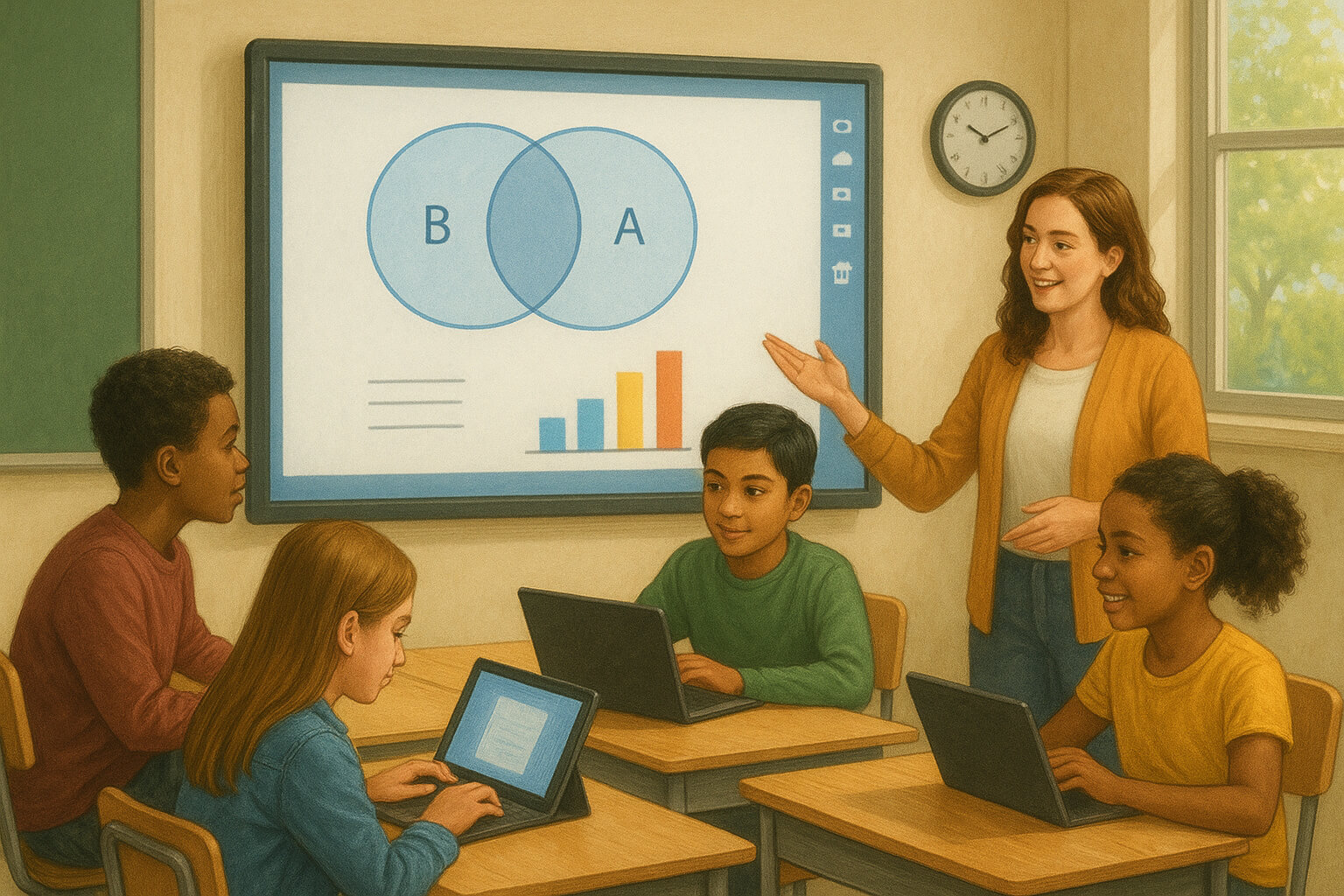September 05, 2025

In today’s rapidly evolving world, technology is no longer an optional tool in the classroom—it’s a vital part of how education is delivered, experienced, and shaped. From interactive whiteboards and online learning platforms to artificial intelligence and virtual reality, digital innovation has transformed the educational landscape.
But as with any significant change, the integration of technology into learning brings both remarkable benefits and complex challenges. Understanding how to harness its potential—while also addressing concerns such as inequality, teacher readiness, and ethical use—is key to building a more inclusive, effective, and future-ready education system.
One of the most revolutionary impacts of technology in education is its ability to bridge distance and deliver learning across boundaries. Students in rural villages, conflict zones, or isolated regions can now access the same knowledge as those in urban centers through video lectures, digital libraries, and e-learning platforms.
Even during global disruptions—such as the COVID-19 pandemic—online learning ensured that education could continue, albeit under strained conditions. Cloud-based platforms, remote assessments, and virtual classrooms made it possible to maintain educational continuity, proving the resilience and adaptability of tech-driven learning.
However, while technology can bridge gaps, it can also expose them. Millions of children around the world still lack access to devices or stable internet connections. According to the United Nations, nearly one-third of students globally are affected by the digital divide. This highlights a stark reality: unless digital equity is prioritized, technology could worsen rather than reduce educational inequality.
Explore more about this pressing issue in Addressing the Digital Divide in Low-Income Communities.
Traditional classrooms often struggle with a “one-size-fits-all” approach. But digital tools can adapt in real time to the unique pace, preferences, and learning styles of each student.
Adaptive learning platforms, for example, use AI to analyze a student’s performance and adjust content accordingly. If a learner struggles with a concept, the system offers extra support; if they excel, it introduces more advanced material. This dynamic feedback loop empowers students to take ownership of their learning journey and stay motivated through individualized progress.
Teachers also benefit. With access to dashboards and analytics, educators can pinpoint learning gaps and personalize instruction more effectively. This shift toward data-informed teaching is a defining feature of the 21st-century classroom and is explored further in The Future of Learning: Innovations in Education.
The global workforce is becoming increasingly digital. From remote collaboration to AI development, the careers of tomorrow will demand skills that traditional curricula were never designed to teach. Schools must now prepare students not just to learn, but to thrive in a tech-centered world.
Technology-rich classrooms foster this readiness. Coding programs introduce logic and creativity, STEM clubs promote experimentation, and robotics labs challenge students to engineer practical solutions. By integrating digital fluency early on, students learn to navigate and shape their technological environments with confidence.
These efforts echo the principles highlighted in STEM Education: Preparing Youth for the Future, underscoring that technology in education is as much about mindset as it is about tools.
A common misconception is that technology might replace teachers. In reality, great technology amplifies great teaching.
When teachers are properly trained and supported, they can use digital tools to enhance their lessons, diversify instruction, and engage students more effectively. For example, multimedia presentations can make abstract topics more concrete, while online simulations offer interactive, hands-on learning experiences.
However, these benefits hinge on teacher preparedness. Schools must invest in professional development, training programs, and ongoing mentorship to help educators feel confident using these tools. Peer collaboration and communities of practice also play a vital role in adapting pedagogy to modern demands—an idea explored in Mentorship Matters: Guiding Young Minds to Success.
In addition to enhancing performance, technology has the power to make education more inclusive and accessible for learners with disabilities, language barriers, or other challenges.
For instance:
These innovations can significantly enhance participation and comprehension for students who may otherwise be left behind. However, accessibility alone is not enough—accessibility must be paired with availability. As discussed in The Role of Non-Profits in Educational Equity, community organizations and grassroots efforts are essential in scaling inclusive technology across all school systems.
With the rise of educational technology comes an equally important responsibility to protect student data and promote healthy online behavior.
Schools must ensure that platforms are secure, that student information is kept confidential, and that digital interactions are monitored ethically. Cyberbullying, data breaches, and screen overuse are real concerns—and addressing them requires clear policies, robust infrastructure, and proactive digital literacy education.
Students need guidance not only in how to use technology, but in how to use it wisely and safely. Teaching digital citizenship—respecting privacy, verifying information, managing screen time—is now as important as teaching reading or math.
At its core, education is about relationships and growth. Technology can streamline processes and unlock new possibilities, but it should never replace the human connection at the heart of teaching and learning.
A truly modern education system finds the balance: using technology to enrich—not overshadow—the personal, emotional, and social dimensions of learning. By doing so, we ensure that students are not only prepared for the jobs of the future but are also equipped to be thoughtful, compassionate, and capable citizens of a digitally interconnected world.
Technology is transforming education in unprecedented ways. It has the power to broaden access, tailor instruction, build future-ready skills, and foster inclusion. But for this transformation to be meaningful and equitable, it must be intentional, supported, and inclusive.
Success in tech-enhanced education lies not in having the latest tools but in how thoughtfully and ethically they are used. When combined with trained teachers, supportive communities, and clear values, technology becomes not just a tool—but a bridge to a better future.
For continued exploration, you may find value in:
Stay up to date with the latest tips, expert insights, product reviews, and step-by-step guides to help you grow, create, and succeed—no matter your industry or passion.